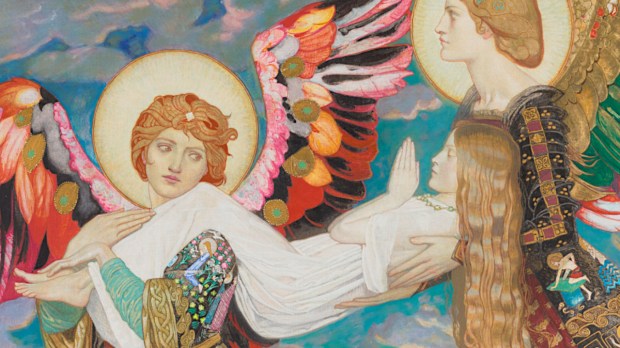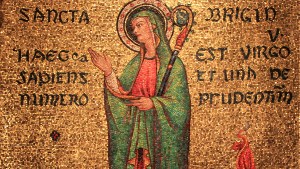While February 1 marks the fest day of the Irish saint Brigid, this year it’s also the beginning of a month where the normal tradition of proposing marriage is abandoned. And not many people are aware that according to legend — although it’s important to take these legends with a pinch of salt — St. Brigid had something to do with this little revolution.
As you may know, every four years February 29 rolls around and in the charming tapestry of Irish folklore, it allows for a quirky tradition. In old Irish custom, a Leap Year is the golden opportunity for a woman to take things into her own hands and pop the question on bended knee.
Incredibly this role reversal started in 5th-century Ireland, where St. Brigid of Kildare lamented the long wait for proposals. Legend has it that St. Patrick, ever the peacemaker, suggested that women could propose every seven years, according to My Irish Jeweler.
However, the persistent Brigid managed to negotiate him down to every four years, where Patrick declared a special day in February during Leap Years when women could take the lead in proposing. Quite the unconventional matchmaker!
The tradition hopped across the Irish Sea to Scotland, thanks to Irish monks. In 1288, the Scots went official, allowing women to propose during a Leap Year. Incredibly, declining a proposal on this day could cost a man a fine, ranging from a kiss to payment for a silk dress.
The five-year-old Queen Margaret, who reportedly initiated the law, was allegedly behind these punishments. The youngster also came up with a proposal dress code — a mandatory red petticoat.

Some dubious legends
The roots of this custom intertwine with tales of St. Patrick and St. Brigid. In one story, the patroness saint of Ireland proposes to Patrick, who declines but offers a kiss and a silk gown in consolation, as shared by Irish Central.
The pair determined that if a man rebuffs a refusal, he should at least offer a gift. Some tales mention that 12 gifts should be the correct consolation prize. It’s all a little dubious, considering Brigid would’ve been quite young when Patrick passed away in 461. But after all, legends are meant to be a bit mysterious.
However, the notion of gift-giving could be seen in some European circles if a woman’s proposal was rejected. If rejecting a woman, a suitor would buy her 12 pairs of gloves to hide the lack of an engagement ring.
February 29, in certain places, goes by Bachelors’ Day due to this tradition. English law used to actually ignore this special day in the calendar, considering it legally nonexistent. As a result this opened the door for women to propose and challenge the unfair custom that limited proposals to men.
Even St. Oswald gets a nod in this calendar quirk, as his feast day landed on February 29. Though celebrated on February 28 most times, it’s a reminder that traditions can be as unpredictable as Leap Day itself.
So, if you’re thinking of giving this old tradition a spin, remember, it’s a leap of faith for both men and women. And you just never know …



